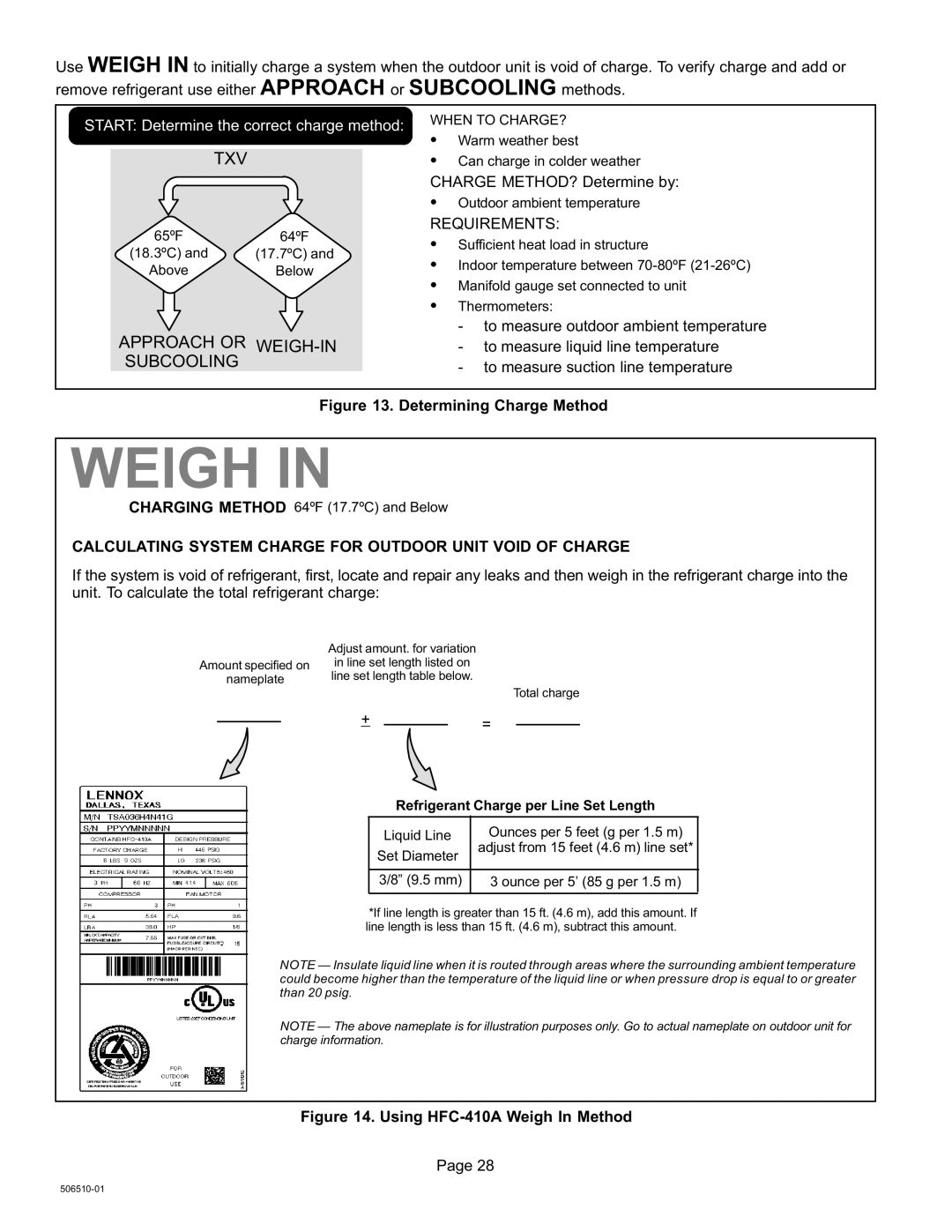
Use WEIGH IN to initially charge a system when the outdoor unit is void of charge. To verify charge and add or remove refrigerant use either APPROACH or SUBCOOLING methods.
START: Determine the correct charge method:
TXV
65ºF64ºF
(18.3ºC) and | (17.7ºC) and |
AboveBelow
APPROACH OR WEIGH-IN
SUBCOOLING
WHEN TO CHARGE?
SWarm weather best
SCan charge in colder weather
CHARGE METHOD? Determine by:
SOutdoor ambient temperature
REQUIREMENTS:
SSufficient heat load in structure
SIndoor temperature between
SManifold gauge set connected to unit
SThermometers:
−to measure outdoor ambient temperature
−to measure liquid line temperature
−to measure suction line temperature
Figure 13. Determining Charge Method
WEIGH IN
CHARGING METHOD 64ºF (17.7ºC) and Below
CALCULATING SYSTEM CHARGE FOR OUTDOOR UNIT VOID OF CHARGE
If the system is void of refrigerant, first, locate and repair any leaks and then weigh in the refrigerant charge into the unit. To calculate the total refrigerant charge:
Amount specified on nameplate
Adjust amount. for variation in line set length listed on line set length table below.
Total charge
+=
Refrigerant Charge per Line Set Length
Liquid Line | Ounces per 5 feet (g per 1.5 m) | |
adjust from 15 feet (4.6 m) line set* | ||
Set Diameter | ||
| ||
|
| |
3/8" (9.5 mm) | 3 ounce per 5’ (85 g per 1.5 m) | |
|
|
*If line length is greater than 15 ft. (4.6 m), add this amount. If line length is less than 15 ft. (4.6 m), subtract this amount.
NOTE Insulate liquid line when it is routed through areas where the surrounding ambient temperature could become higher than the temperature of the liquid line or when pressure drop is equal to or greater than 20 psig.
NOTE The above nameplate is for illustration purposes only. Go to actual nameplate on outdoor unit for charge information.
Figure 14. Using HFC−410A Weigh In Method
Page 28
506510−01
